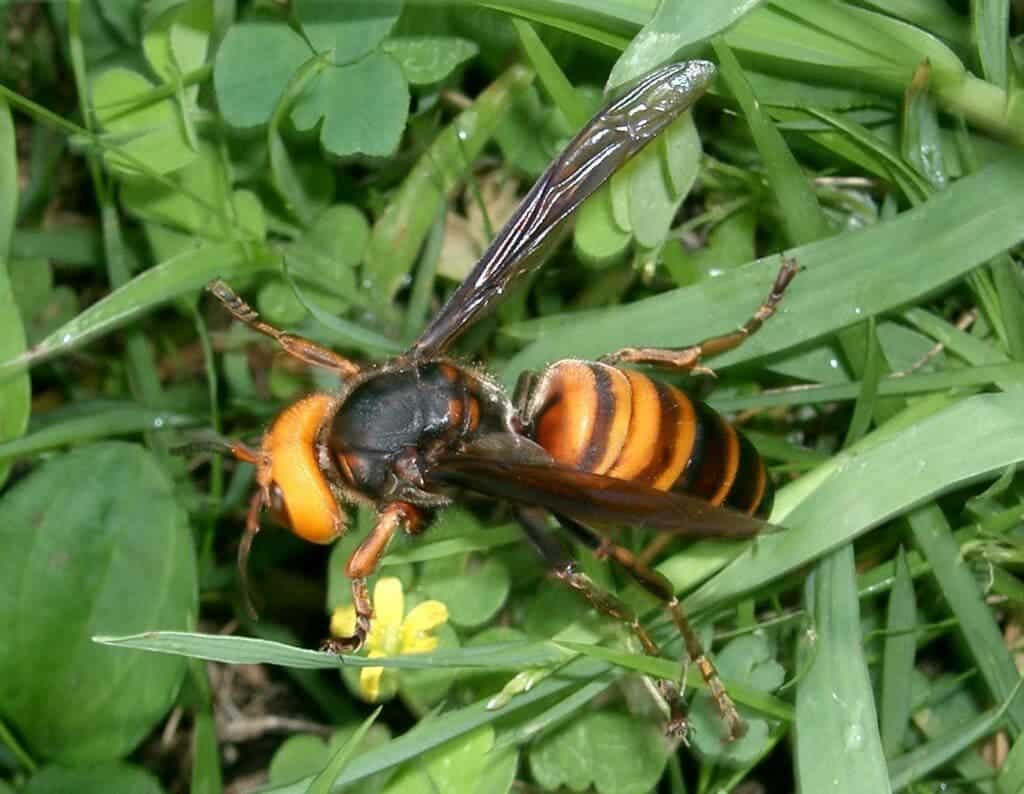Asian Giant Hornets (Vespa mandarinia) have been spotted in northwest Washington state in the United States. Their appearance has stirred nation-wide concern and they have since become a social media sensation, under the name “murder hornets”.
But behind all the media frenzy and exaggerations, there are actual environmental and economic risks associated with these invasive species. As they prey on honey bees, serious economic and ecological consequences could follow if they spread around the US.

Two hornets were spotted at the end of 2019 and two more have been found since May this year. While there is still hope to stop their spread as the sightings were confined to a relatively small area, the media hype surrounding their appearance highlighted the issue of invasive species control. Worryingly, in 2019 the Trump Administration decreased the budget of the National Invasive Species Council (NISC) by 50%.
Just to get this out of the way — there aren’t swarms of murder hornets coming out to get us. That’s not the problem here.
The sting of an Asian Giant Hornet is said to be extremely painful. However, deaths only occur rarely, mostly from an allergic reaction to their venom. Thus, from a human health point of view, experts have dismissed the threat as a media hype.
“The number of people who are stung and have to seek medical attention is incredibly small” Chris Looney, a Washington Agriculture Department entomologist told AP News.
Honey bees, however, have a lot more to worry about. Japanese honey bees can defend themselves against hornets by enclosing them in a ball that heats up and ‘cooks’ the invader. But other honeybees (which haven’t interacted with these hornets) are unable to defend themselves.
As it is often the case with an invasive predator, European honey bees in the US are defenseless. By killing 40 bees per minute, Asian Giant Hornets can ravage an entire beehive in just a few hours.
Invasive species can have devastating consequences on the environment as well as become colossal economic burdens. The United States spends hundreds of billions of dollars every year to mitigate the damage caused by nonnative pests. In addition to the budget cut of NISC, the operation of the associated Invasive Species Advisory Committee (ISAC) was canceled altogether.
“Invasive species are a threat to national security, a threat that the U.S. and many other countries are not adequately responding to despite the warnings by experts”. Said Jamie K. Reaser, former executive director of the NISC in a press release.
Unfortunately, although the threat of invasive species is steadily on the rise, many experts in the US are worried about the budget cuts. As University of Rhode Island ecologist Laura Meyerson said in a press release:
“Invasive species cost the United States hundreds of billions of dollars annually. We need a coordinated federal effort to strengthen our national biosecurity.“
Globalization has brought many blessings, reducing barriers and making our world more connected. However, as we are able to travel to the furthest corners of the Earth in a matter of days, the stowaways that we inadvertently take with us can also do the same.
Globally, 1.4 trillion dollars are spent every year in managing and controlling invasive species, a figure that has been steadily on the rise in the past few years. Furthermore, the damage done by invasive species is long-lasting and multifaceted — think of it as an environmental pandemic.
It is crucial that countries invest more in invasive species control. If not, a nightmare such as the spread of the murder hornets might turn into reality.






